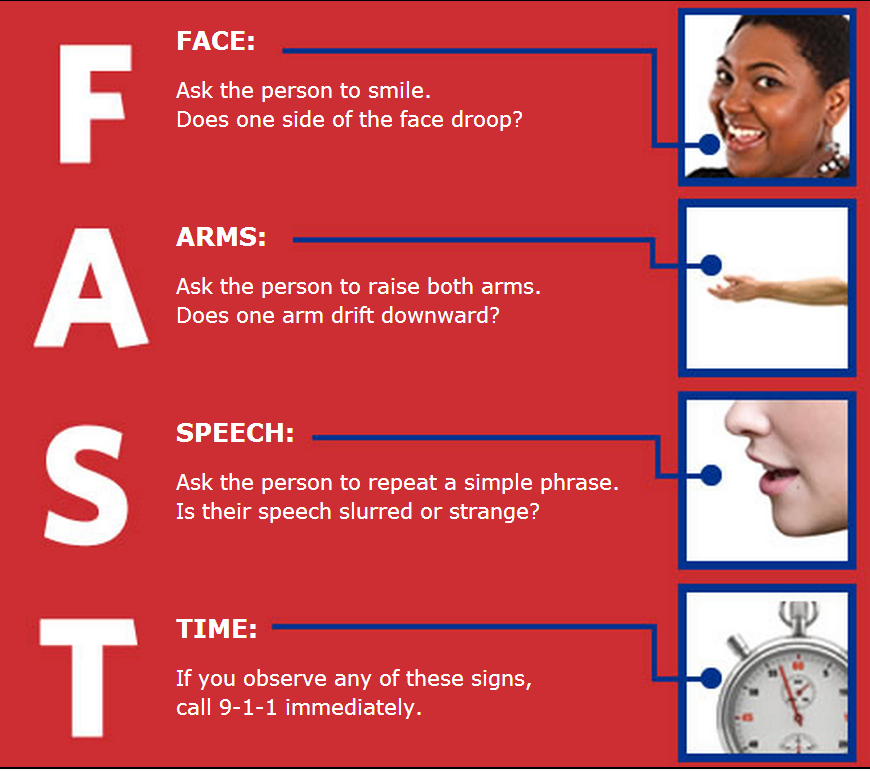So your ATV is not starting and making strange noises like never before? You may be running through a low compression problem. Don’t worry as here we brought the solutions for you. We will guide you on how to fix your ATV low compression. Also, we will explain what causes low compression on ATV so you don't get stuck with it in the future. Let’s begin!
What are the signs of low compression? Gas leaks from the piston usually cause low compression in an ATV. Your ATV’s engine might not start. If it starts, it may make strange noises. Or it could have low power.
Other signs include leaks in inner valves. The spark plug might be oily; it should be dry. These are what happens if compression is low. You have to look for these signs.
Image from www.dirtbikemasters.com
Learning what drives a low compression to your ATV will help you to avoid any future risks. Here’s a small list of the causes:
If you see any of these, then it is a low compression problem. Otherwise, you may need to observe other issues.
Keep all essential tools and basic spare parts on board. Whether you prefer a bag or a backpack, opt for waterproof storage options.
ATV are waterproof & breathable riding gear
Find out the items that suit your needs
You can check the low pressure with a pressure gauge. Please be sure to remove all the spark plugs and deactivate the ignition coil. Attach the pressure gauge in the place of the spark plug. Hold on to the throttle and record the maximum reading in the gauge.
There is low compression if it gives a reading lower than average (more on that later in the article). Now you need to fix it accordingly. Read till the end to know how you can solve each problem.
Read till the end to know how you can solve each problem.
Now we will discuss how to fix low compression in each case. Make sure to identify your situation and choose the solution as per your issue.
Image from www.flanigantireandauto.com
A spark plug ignites the combustion in an internal combustion engine. If the spark plug broke or got damaged, you either lose the compression or get no compression at all. If the spark plug breaks down, it won’t ignite the small explosion to move the piston.
If it is malfunctioning, you can easily remove and place it back. It will help you in getting the spark. But if it is broken, then you will need to replace it. A faulty spark plug is among the significant causes of low compression.
You need to remove or replace it. Unfortunately, you can’t check which one is causing the problem. You need to replace them all. Spark plugs are inexpensive so they won't put much stress on your pocket.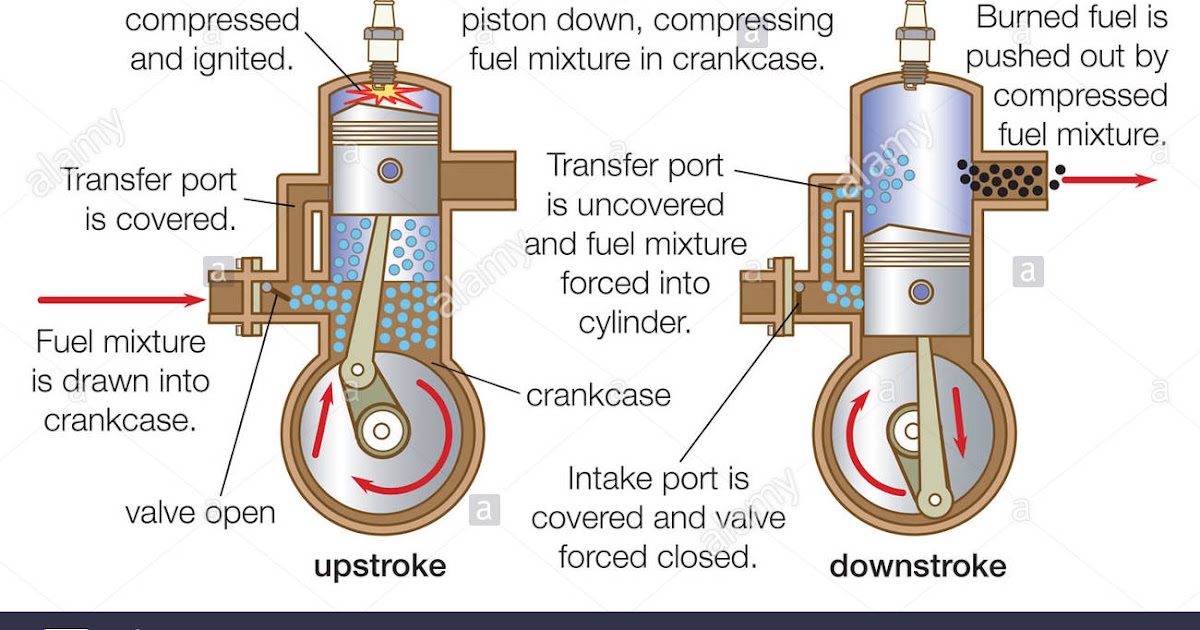
But sometimes, the reinstallation of them is enough.
Image from www.hondaatvforums.net
Another major cause of low compression is broken or defective inner gas valves. If the valves are damaged, the gas may leak from them.
Gas may also leak from inner valves if their opening and closing time is not synchronized. It is due to the loosening of springs. The valves do not sit in their place properly, or they overheat so much that it wears out their seals. So check those air intake and exhaust valves.
In each case, you have to check every piston. The only way to fix it is to replace it. You need to replace the valve which is causing the gas leak.
Image from www.oards.com
Two to four piston rings are around each piston to seal the air in the ignition chamber. Their purpose is to keep the crankcase and the combustion chambers material separated. Worn out or damaged piston rings let the gas or the fuel enter the crankcase.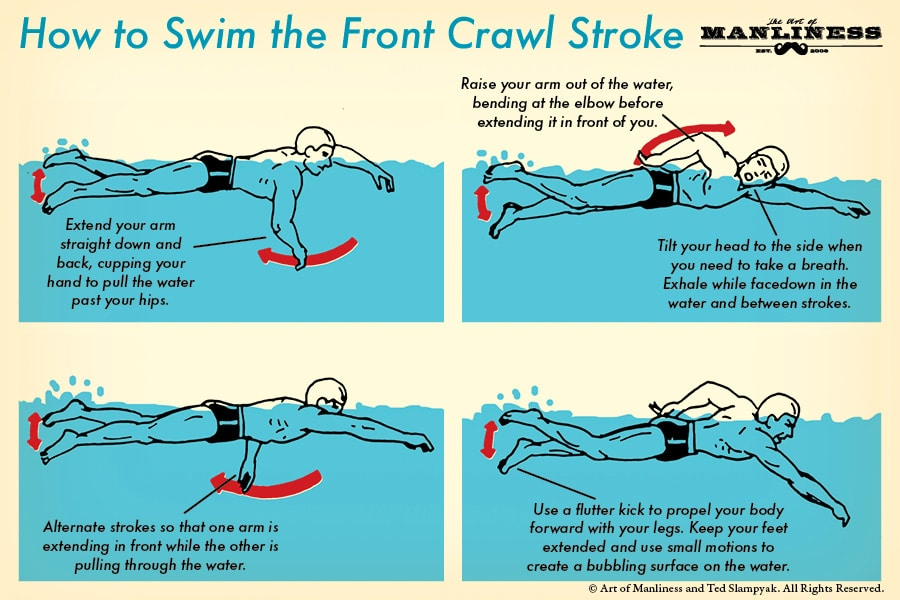
It may also result in the leaking of oil into the combustion chamber. Both cases cause low pressure. Do a compression test to check it. If you find a leak, there is a makeshift remedy. You can pour some diesel into the cylinder.
Leave it there for some time. Then do a pressure test. It may solve the issue. But if you still find the leak, replace the rings or the piston immediately.
Image from www.teryxforums.net
A faulty head gasket causes the shift of compression to coolants or the other leaks. The head gasket ensures that every part gets its proper pressure. But a worn-out one will make pressure differences.
A pressure test can point out a bad gasket. If you are observing low compression on adjacent pistons, then the culprit is the gasket.
Other signs you can check are white smoke coming out of the exhaust pipe. The engine is overheating and too noisy. Spark plugs are getting damaged every short time. You may also observe the coolant leaking from the engine.
You may also observe the coolant leaking from the engine.
You can fix it, again, by replacement. But you need to take out the whole engine. It can’t be done without it.
ATV are waterproof & breathable riding gear
Find out the items that suit your needs
Mostly a question is asked: will ATV run with low compression? The minimum requirement to run an ATV is 100 PSI. It needs at least 100 PSI to function well. So if it is below the limit, then the sweet answer is, No.
And most ATVs run on a maximum pressure of 250 PSI, but some can go up to 300 PSI.
Now you know how to check any problem that is caused by low compression. And you also know the measures to prevent it. The only catch is that it mostly requires a replacement, and you have to take the whole engine out.
Since now you can identify and fix the problems, your ATV will roar again to its fullest! Are you ready to see how deep you can go?
TARGET 20L Camo
32 EUR
22.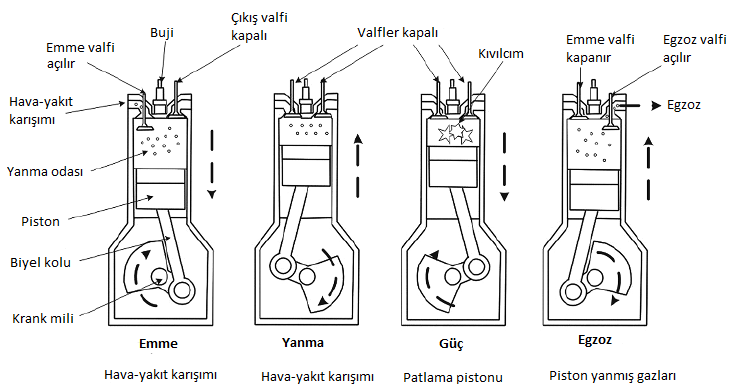 40 EUR
40 EUR
PLAYER 20L Black
27 EUR
Explore all
When your ATV loses some of the fire in its belly, and you can’t quite put your finger on it. It may be time to check the valve lash. Your ATV engine is designed with a ton of power, and it’s still there, waiting to be tapped.
The top seven symptoms of poor ATV valve adjustment include:
1 ATV won’t start
2 Engine noisy
3 Engine misfires
4 Bike lacks power
5 Engine runs rough
6 Erratic idle
7 Hard on gas
By the end of this post, you’ll understand and recognize common valve lash symptoms, know which condition your engine suffers from and how to fix it.
This guide covers the more common rocker-style valve train. If your ATV is fitted with an OHC (Over Head Cam), the procedure is a little different.
Page Contents
Valve lash or clearance is a factory-specified gap that must be maintained between rockers (or cams) and valve tips. As an engine wears, the valve clearance usually gets larger and so needs to be adjusted. Unfortunately, on some bikes gaining access to the valves is a bit of a chore and is regularly ignored until it can’t be.
As an engine wears, the valve clearance usually gets larger and so needs to be adjusted. Unfortunately, on some bikes gaining access to the valves is a bit of a chore and is regularly ignored until it can’t be.
All single cylinder engines will have at least two valves, one inlet, and one exhaust. However, most bikes will have four, two of each.
The valves, as you know, are activated by the rockers (cams in OHC engines), which are driven by the camshaft. The camshaft is driven by the crankshaft, and the whole process is sequenced. The timing of this sequence is mission-critical to the optimum performance of your power plant.
Only four-stroke engines have valves, and valves allow for more accurate, predictable, smoother, and cleaner engine performance. A four-stroke engine is just easier to live with, but because it has more internal moving parts than a two-stroke engine, it needs more maintenance.
1 Intake stroke – Intake valve(s) opens as the piston moves down the cylinder and closes again as the piston bottoms out.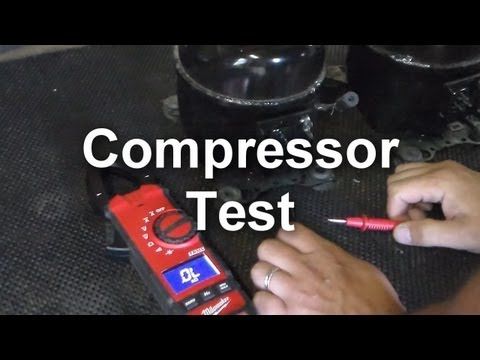
2 Compression stroke – Intake valve(s) now closed as the piston moves up the cylinder, compressing the air/fuel mix into the combustion chamber at the top of the cylinder.
3 Power stroke – The spark plug fires and ignites the compressed mix causing the piston to move down the cylinder under power.
4 Exhaust stroke – Exhaust valve(s) open as the piston moves up the cylinder, pushing the spent gases out. The valve is fully closed as the piston reaches the top of the cylinder, and the cycle starts over.
I’ve covered valve lash adjusting previously and you can check it out here “ATV valve adjusting in 6 steps”
An ATV may not start for many reasons. Incorrect valve lash will certainly be on the list. Hot start problems are often caused by valve lash issues. As the engine reaches operating temperature, lash tolerances change. If the valves are too tight, they may remain open, which will reduce cylinder compression.
An engine without compression won’t start. If the valve lash is excessive, your valves won’t open, and the engine won’t receive fuel and so won’t start.
A noisy engine is a useful clue. The tell-tale ticking noise of an idling engine could very well be miss-adjusted valve lash. Loose rockers, as you can guess, will make a racket if the gap between the rocker and valve tip is excessive. And you already know that excessive lash will cause poor running or no start.
Excessive lash, if neglected, can damage the valves and rockers as they hammer together. Checking the lash is the best test, but I’ll often use a stethoscope to confirm. Especially useful if access to the valve cover is labor-intensive.
A misfiring engine could be caused by miss adjusted valve lash. Excessive lash will cause the engine to run lean (not enough gas) and that will cause the plug to misfire. Running the engine with tight valves can also cause the plug to misfire.
If the valves are not closing fully, the engine mix is lean, and that will, as you know, cause a misfire.
If your engine lacks power, maladjusted valves could be the cause. Incorrect valve lash causes the valves to open for more or less time than needed. Excessive valve lash means the valves open late and for less time than needed. This causes a lack of gas which in turn causes a lack of engine performance.
Tight valves can cause the valves to open early and for too long. This causes (depending on how tight they are) lean running, hot running, misfiring, and a general lack of performance.
A rough-running engine is irritating but worse than that. If it’s caused by maladjusted valves, you could cause lasting damage to the motor. If valves are tight, it may cause the engine to run lean. A common symptom is popping noise from the engine.
Overheating engines, burnt valves, hammered valve tips, blown head-gaskets are all real risks that will cost a packet to fix.
Valve clearance will affect idling big-time. If valves are tight, you might find the engine starts but then dies as it warms up. Or the idling is even rougher when warm. Whatever the symptoms, your engine valve lash should be checked once a year. If I owned a used bike, I’d assume it hasn’t been done recently as it’s commonly overlooked.
Adjusting the valve lash is a bit of a chore on some bikes, but it’s worth it. You will notice the difference right away. The engine will start more easily, quieter, and throttle response will be sharp and more powerful.
Whenever performance suffers, so does gas mileage. It simply takes more gas to do the same work. So anytime you notice gas mileage drop, it’s a big clue that your ATV has a problem.
The problem could be something simple like a dirty spark plug, or more serious altogether. Either way, early diagnosis is always best.
You may find the following posts helpful:
ATV idles up and down
How to tell if ATV jumped time
John Cunningham
John Cunningham is a technical writer here at ATVfixed.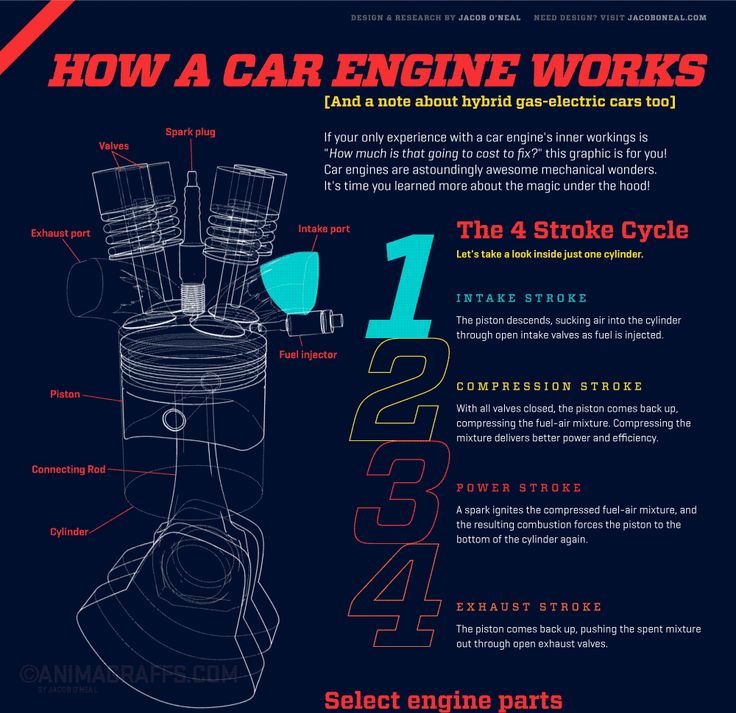 com. He’s a Red Seal Qualified Service Technician with over twenty-five years experience. He’s worked on all types of mechanical equipment, from cars and trucks to ATVs and Dirt bikes.
com. He’s a Red Seal Qualified Service Technician with over twenty-five years experience. He’s worked on all types of mechanical equipment, from cars and trucks to ATVs and Dirt bikes.
Modern ATVs are equipped with two-stroke and four-stroke engines. As a rule, two-stroke engines are installed on light, children's and teenage models, and four-stroke engines are installed on utility and powerful sports ATVs. The engines of all CFMOTO ATVs are four-stroke. Consider the principle of operation of 4-stroke engines and their advantages over 2-stroke ones.

The name speaks for itself - the engine sequence is divided into four strokes:
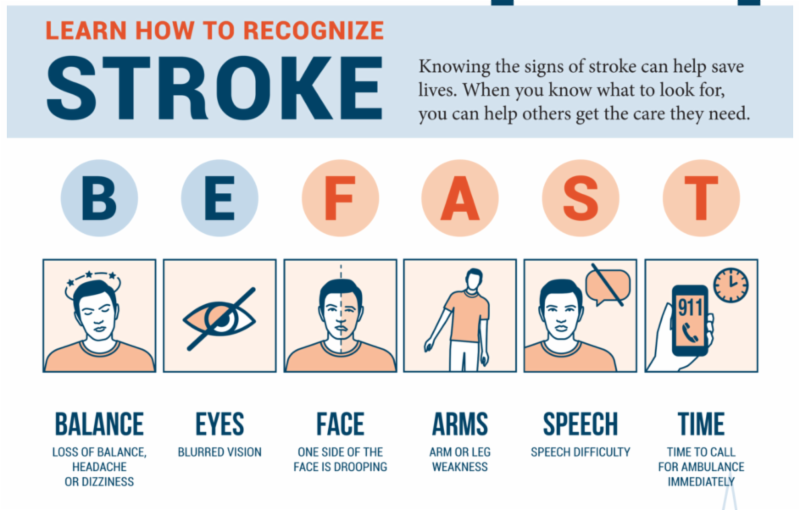 They put pressure on the piston, causing it to move down. At this point, both valves are closed.
They put pressure on the piston, causing it to move down. At this point, both valves are closed.
Consider the step-by-step sequence of actions to start the engine on an ATV and note some features of operation.
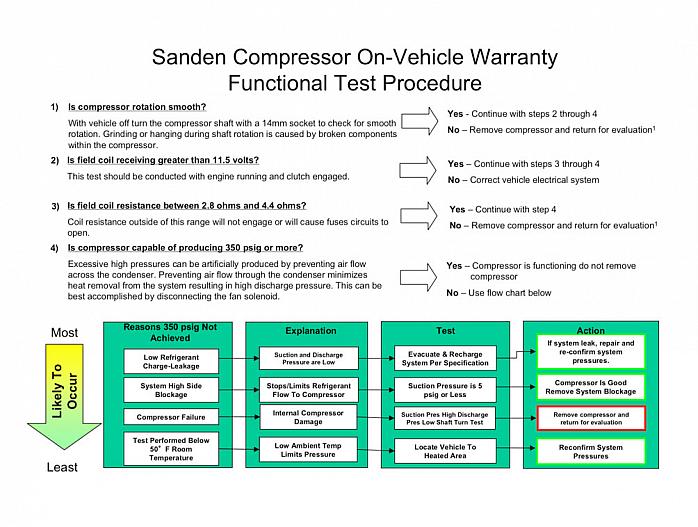
As you can see, there is nothing complicated in the operation of a four-stroke engine, everything is consistent and simple. However, CFMOTO experts do not recommend interfering with the operation of the engine yourself. If you need ATV maintenance or repair, please contact the nearest CFMOTO dealership in your city.
Addresses of dealer centers
ATVs, like any other equipment, need proper maintenance, as well as responsible observance of the rules of operation. Not only their performance depends on this, but also their durability.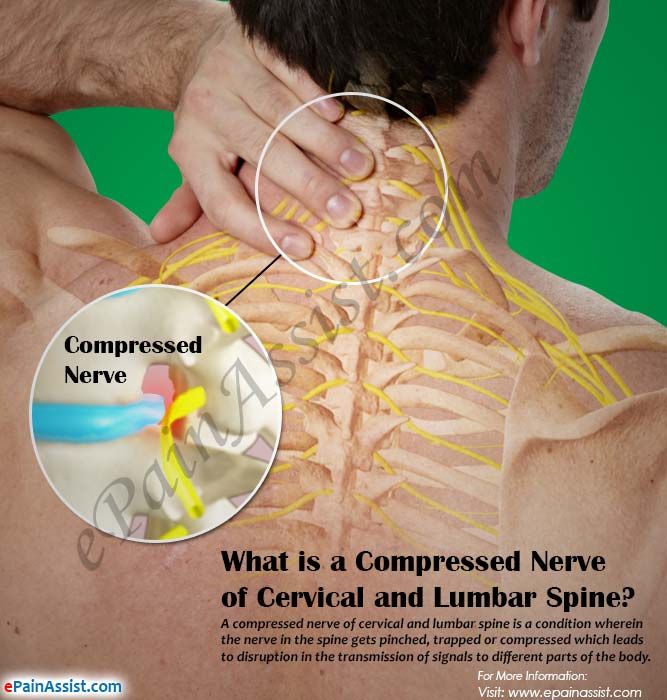 One of the key points is the correct choice of fuel for the ATV. We'll talk about this today.
One of the key points is the correct choice of fuel for the ATV. We'll talk about this today.
Important: This article is for informational purposes only. When choosing fuel for your ATV, first of all, be guided by the information specified in the owner's manual.
There is no universal recommendation here and cannot be for the simple reason that equipment from different brands has its own technical and design features, on which the type of recommended fuel will also depend. However, in the vast majority of cases, gasoline is recommended: either AI-92, or AI-95. All Avantis ATVs, for example, ride exactly on the 92nd.
To refuel ATVs, gasoline is used, which is sold at gas stations with the AI prefix. The abbreviation AI means that gasoline (A) is automobile, and (I) a research method was used to determine its octane number. After AI, the octane number itself is indicated directly. There are also all kinds of naphthas and aviation gasolines, but they will not be useful to us today.
The octane number is one of the main characteristics of gasoline: it reflects the knock resistance of the fuel during compression and the ratio of octane isomers to the amount of heptane in the fuel. In the 95th gasoline, the content of isooctane in the heptane mixture is 95%, in 92 - 92%, respectively.
It is important to note that the octane number itself does not determine this ratio, but only reflects it. The ratio is directly calculated by comparing the anti-knock properties of a particular gasoline with a reference mixture consisting of isooctane with an octane rating of 100 and n-heptane with an octane rating of 0.
An interesting fact: some special fuels (for example, racing gasolines) can have an octane rating of more than 100 - that is, surpass the reference mixture in terms of knock resistance.
The type of gasoline for a particular engine is determined based on its compression ratio: it is on the basis of this indicator that manufacturers make recommendations in the instruction manuals. Can these recommendations be violated? Let's figure it out.
Can these recommendations be violated? Let's figure it out.
You can often come across the opinion that if, with the recommended 92nd, pour 95th into the tank, the engine will explode and the end of the world will come. However, it is not. If you pour high-octane gasoline into a low compression engine, it will not cause any harm to the engine. But such a replacement is meaningless and economically impractical.
That is, the answer to the question of whether gasoline 95 can be poured into an ATV at the recommended 92 will be positive. True, you won’t get some incredible increase in power and performance improvement that “experts” on the forums often promise - but you will spend many times more money.
But in the opposite case, when the engine with a high compression ratio is designed for the 95th or 98th gasoline, you really should not pour the 92nd: this will not lead to the ignition of the fuel in the cylinders required for normal operation, but to its detonation.